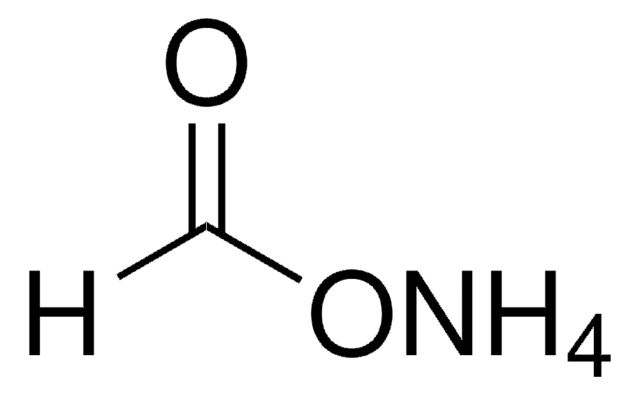584222
Tetrahydrouridine
Potent competitive inhibitor of cytidine deaminase. Also available as a 100 mM solution in H2O.
Sinónimos:
Tetrahydrouridine
About This Item
Productos recomendados
Nivel de calidad
descripción
RTECS - UW5798980
Ensayo
≥90% (TLC)
Formulario
solid
fabricante / nombre comercial
Calbiochem®
condiciones de almacenamiento
OK to freeze
desiccated (hygroscopic)
protect from light
color
white to off-white
solubilidad
water: 200 mg/mL
Condiciones de envío
wet ice
temp. de almacenamiento
−20°C
cadena SMILES
N2(CCC(NC2=O)O)[C@@H]1O[C@@H]([C@H]([C@H]1O)O)CO
InChI
1S/C9H16N2O6/c12-3-4-6(14)7(15)8(17-4)11-2-1-5(13)10-9(11)16/h4-8,12-15H,1-3H2,(H,10,16)/t4-,5?,6-,7-,8-/m1/s1
Clave InChI
UCKYOOZPSJFJIZ-XVKVHKPRSA-N
Categorías relacionadas
Descripción general
Aplicación
- Oncotherapy resistance explained by Darwinian and Lamarckian models.: This research explores the mechanisms of oncotherapy resistance, combining Darwinian and Lamarckian models to provide a comprehensive understanding. The study highlights the role of Tetrahydrouridine in modulating therapy resistance pathways in cancer treatment (Saunthararajah et al., 2024).
- Neuroendocrine lineage commitment of small cell lung cancers can be leveraged into p53-independent non-cytotoxic therapy.: This study investigates the potential of using Tetrahydrouridine in non-cytotoxic therapies for small cell lung cancers, focusing on neuroendocrine lineage commitment and its implications for treatment efficacy (Biswas et al., 2023).
- In Vitro Interaction of Tetrahydrouridine with Key Human Nucleoside Transporters.: This study explores how Tetrahydrouridine interacts with human nucleoside transporters, shedding light on its mechanisms of action and potential as a therapeutic agent in biochemistry and pharmacology (Säll et al., 2023).
- Mycoplasma infection of cancer cells enhances anti-tumor effect of oxidized methylcytidines.: This research investigates how mycoplasma infection enhances the anti-tumor effects of oxidized methylcytidines, with Tetrahydrouridine playing a crucial role in the observed therapeutic outcomes (Pang et al., 2023).
Envase
Advertencia
Reconstitución
Otras notas
Bouffard, D.Y., et al. 1993. Biochem Pharmacol.45, 1857.
Laliberte, J., et al. 1992. Cancer Chemotherap. Pharmacol.30, 7.
Riva, C., et al. 1992. Chemotherapy38, 358.
Yusa, K., et al. 1992. J. Biol. Chem. 267, 16848.
Hanze, A.R. 1967. J. Am. Chem. Soc.89, 6720.
Información legal
Código de clase de almacenamiento
11 - Combustible Solids
Clase de riesgo para el agua (WGK)
WGK 3
Punto de inflamabilidad (°F)
Not applicable
Punto de inflamabilidad (°C)
Not applicable
Certificados de análisis (COA)
Busque Certificados de análisis (COA) introduciendo el número de lote del producto. Los números de lote se encuentran en la etiqueta del producto después de las palabras «Lot» o «Batch»
¿Ya tiene este producto?
Encuentre la documentación para los productos que ha comprado recientemente en la Biblioteca de documentos.
Nuestro equipo de científicos tiene experiencia en todas las áreas de investigación: Ciencias de la vida, Ciencia de los materiales, Síntesis química, Cromatografía, Analítica y muchas otras.
Póngase en contacto con el Servicio técnico








